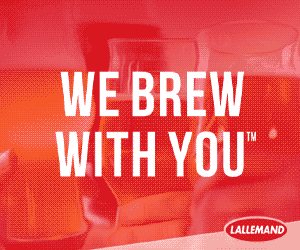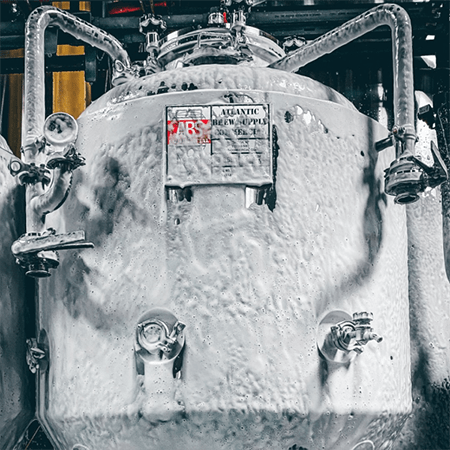Infrastructure Needs for Nanos

I have had the pleasure of helping many new nanobreweries get started over the years, and in doing so I have gained a lot of knowledge that I enjoy sharing with new entrants into the nanobrewing world. In this article I’ll cover some of the common infrastructure needs of a nanobrewery.
There are quite a few things to consider beyond the cost of the property, the location, and the zoning for your type of business when scouting locations and buildings for your new nanobrewery. Those are definitely vital considerations, but things that are often overlooked until too late in the game are the infrastructure needs for operating your business. These can result in costly oversights and unexpected expenses, to complete showstoppers. I highly recommend hiring a competent architect to help you through this process. While they are an added expense, the guidance can save you a ton in the long run.
Utility Considerations
Local building inspectors are your friend. They are there to help you understand the building code requirements of your community and make sure the contractors meet them. They are also a great source for reputable contractors and suppliers. By getting them involved early on, they will help you get on the right path and your startup will go along much more smoothly.
Since most nanobreweries are electric powered, it is very important to know what your electrical needs are for the entire facility. Work with your brewhouse supplier to see what options are available for the system size you’re considering. Most will have single phase 240V options, which is a voltage available in nearly all commercial buildings.
However, single-phase power usually needs a lot of current to drive the heaters needed to boil adequately and heat at a reasonable speed, and many commercial locations won’t have that amount of power readily available. Three-phase power is available typically in 208V and 480V, but it is more common in industrial locations since large machinery usually requires this type of power. A good rule of thumb is 6 KW of power per barrel of your brewhouse. For reference, 6 KW is 25A at 240V, or 28.8A at 208V. If you have 480V available, that drops the current to only 12.5A. An important thing to understand about heating elements is that they are built for a specific voltage. If you power the element with a different voltage the wattage will change significantly! Note that you may not be powering all tanks at the same time so factor that into your electrical power needs. Be prepared with a couple options from your supplier as you look for locations and buildings.
In addition to brewhouse power needs, glycol chillers also consume a lot of power. For instance, cold crashing one barrel requires 1500 BTU/hour, while maintaining that temperature in the brite tank requires 450 BTU/hour, or 175 BTU/hour in a conical fermenter (assuming the tanks are well insulated). Divide by 3.41 to convert BTU/hour to watts. Reach out to a reputable chiller company with local support and get power requirements from them as well. Smaller loads will be building air conditioning, lighting, grain mills, exhaust fans, and other small house loads. Making a chart with all the loads is helpful as you inspect different buildings. Be sure to ask the owner what power is available, (voltage, single- or three-phase, and amperage), and where the main panel is located. The further it is from your equipment, the more expensive it will be to install power to the equipment.
As you get closer to selecting a location, it is advisable to consult with a licensed electrician to confirm the power needs and the actual power available in the building. I would not recommend asking the building owner or your buddy. An electrician can also give you an idea of what the cost will be to connect your equipment to the main power supply under the local code requirements. Be sure to confirm that your equipment supplier can provide UL listed panels and equipment since most insurers and buildings will require this.
If your needed power isn’t currently available at this location, consult with the electric utility company for costs to upgrade to the power you need. Often there is little or no cost to upgrade as they do factor increased utility bills into their assessment. However, if the power isn’t readily available at a nearby power pole, the costs can be a showstopper. Best to know this up front!
Lastly, make a plan for future growth at this location. Not only for electrical power, but additional cellar equipment and potentially a larger brewhouse. It is always cheaper in the long run to add it now than redo it later.
If your prospective locations simply don’t have the power you need available, consider a natural gas-fired brewhouse. While installation costs are higher due to ventilation requirements and higher upfront equipment costs, it is a fast and efficient energy source. However, you will want to confirm with the gas company that they can provide gas at the necessary pressure and flow your burner will need. Your equipment supplier can let you know what those requirements are.
Water utilities are generally fine in most commercial locations for operating a nanobrewery. But do confirm the water pressure and incoming pipe size with the water company. The biggest flow need will likely be your wort chiller. Your supplier should be able to provide flow and temperature requirements. A quick way to measure flow rate available is a 5-gallon (19-L) bucket and a stopwatch. You will need to fill your tanks at a reasonable pace, but that won’t be your bottleneck. In general, a 5-barrel system will need about a 1-inch (2.5-cm) water supply line diameter.
If you’ll be treating your water with a reverse osmosis (RO) filter, the production rates are dependent on water pressure. If it is too low then you’ll need to install a pressure boost pump so you can meet your brewing liquor needs. Your RO system supplier can likely provide a pump for the system.
Waste water is generally not an issue for nanobreweries, but it is wise to confirm with your water/sewer utility that your main brewing chemicals (acids and bases) are OK to run into the sewer, or if they need to be pre-treated prior to disposal.
Other Interior Infrastructure
Floors are the foundation of your brewery (pun intended). A concrete slab floor poured directly on the ground level will be adequate for supporting nano-sized equipment. If your floors are over a crawl space/basement or on the second floor, you will want to consult with a structural engineer to determine what will need to be done to safely support the load of full brewing vessels.
The only drawback of pre-existing concrete floors is that they are unlikely to be sloped to a drain. A sloped floor and central drain or a trench drain are highly desirable, but may be out of your budget. Most nanobreweries I’ve worked with do not have a sloped floor system and get by just fine. As long as you have a floor drain accessible you can squeegee wet floors to the drain.
Floor coatings are highly recommended, as brewing chemicals can quickly erode bare concrete. Epoxy paints are a very economical and reasonably durable solution. If you have the budget, there are other floor coatings that your local industrial floor coating suppliers can quote for you.
Wall and ceiling penetrations are another consideration for your ventilation system. Condensing steam in your brewhouse that isn’t properly ventilated will lead to mold and mildew issues in your building. Not to mention aromas on brew day overwhelming your beer-consuming clients in your taproom. Be sure to locate your brewhouse where the boil kettle can be ventilated to the exterior of the building. Be sure to ask the building owner beforehand if they will allow roof/wall penetrations. Always install a condensate drain at the base of the ventilation piping so the Dimethyl Sulfide (DMS) and other undesirable condensate doesn’t drain back into your brew kettle.
Another consideration is getting your equipment into the building. This can be through a door or the ceiling. If a large door isn’t available, be sure the owner is OK with you widening it if needed. That will also make grain deliveries, spent grain disposal, and expansion easier in the future.
Exterior Infrastructure
Some key considerations for exterior needs include adequate parking, outdoor seating, truck deliveries, and spent grain storage and removal. Be sure to contact your architect or local building inspector to determine the parking space requirements for your business, and whether outdoor seating is allowed if that is something you are planning.
Considering food trucks? Make sure there is space for them and your customers to access it. Handicap access is most likely a requirement for your brewery, so be sure to get approval from the building inspector on your plans for that if it is not already up to code. Since you will be buying pallets of grain, having access for semi or box trucks is needed. For spent grains, note that they become quite ripe quickly in the summer so having a remote location for storing them until your local farmer can pick them up is a good idea.
Brewery Expansion
It is always a good idea to have expansion plans ready to implement as your business needs grow or change. The Blichmann Pro Brewing page has a tank planner (found at www.blichmannengineering.com/tankplanner/index/index/) that is very helpful not only in planning your initial equipment, but to know how many tanks you’ll need to meet increasing demand, and subsequently, how much additional space to allocate for that and when to do it. That said, oversizing your chiller may be recommended, or possibly adding a second chiller when the time comes.
Once you find your location, be sure to get all your infrastructure needs from your landlord in writing. That way, if there is confusion down the road you won’t be left holding the bag. Starting your brewery is indeed an exciting and exhausting process, and knowing your needs and requirements is the best way to avoid any last-minute costly surprises!







